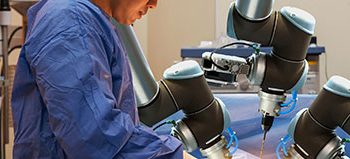The rising demand for animal-derived food products, increasing demand for pet insurance and rising animal healthcare expenditure, growing concerns over the spread of zoonotic diseases, and increase in the number of veterinarians and their income levels are the major factors driving the growth of the veterinary reference laboratories market.
Market Size –
According to research report Veterinary Reference Laboratory Market
is expected to grow at a CAGR of 9.8% between 2016 and 2021 to reach
2.76 Billion by 2021. In the last two decades, milk and meat production
has increased across the globe. Moreover, consumption of meat and milk
has increased significantly in developing countries such as China,
India, and Russia.
Download Brochure: https://www.marketsandmarkets.com/pdfdownload.asp?id=256972714
According to the Food and Agriculture Organization of the United Nations, the demand for animal-derived food products is expected to increase from 200 kcal per person per day in 2000 to 400 kcal per person per day by 2050 in sub-Saharan Africa and South Asia. With the growing consumption of animal-derived food products, there is a growing need for effective diagnostic testing services for the diagnosis and treatment of diseases in animals. This trend is expected to support the growth of the veterinary reference laboratories market in the coming years.
The companion animal population in European and North American countries has grown significantly over the years. According to the European Pet Food Industry Federation, the total number of pets in the European region increased to 283.9 million in 2014 from 271.1 million in 2012. The growing pet adoption in these regions is expected to offer significant growth opportunities to players operating in the companion animal healthcare market. According to the American Pet Products Association (APPA), the overall veterinary expenditure in the U.S. increased from USD 13.0 billion in 2011 to USD 15.4 billion in 2015. This figure was expected to reach USD 15.7 billion in 2016. A similar trend is observed in many European countries. In many cases, health solutions developed for human medical applications are used for veterinary applications. As the cost of these solutions is high, it is one of the key contributors to the growing vet care expenditure. Thus growing pet adoption and veterinary healthcare expenditure propel the growth of the veterinary reference laboratories market.
In
addition, according to the North American Pet Health Insurance
Association (NAPHIA) 2015, pet owners are willing to buy pet health
insurance and over 1.4 million pets were insured in North America in
2014. The North American pet health insurance market increased from USD
504.1 million in 2012 to 660.5 million in 2014. In addition, the annual
insurance premium is grown at GWP (Gross Written Premium) of ~14.5%
between 2012 and 2014. This reduces the pet care burden and increases
the utilization of the expensive diagnostic modalities by the
veterinarians and pet owners
According to the International Livestock
Research Institute (ILRI), zoonotic diseases are the cause of 2.4
billion cases of human diseases and 2.2 million deaths per year.
Veterinarians and government organizations across the globe continuously
aim to control the occurrence and outbreak of any zoonotic disease.
Thus, with an increasing number of zoonotic diseases, there will be a
greater demand for diagnostic products and testing services to identify
and limit the outbreak of these diseases, thereby driving the growth of
the veterinary reference laboratories market.
Get Sample Free Pages: https://www.marketsandmarkets.com/requestsample.asp?id=256972714
Geographically, North America dominates the global veterinary reference laboratories market. Increasing number of companion animals, rising companion animal healthcare expenditure, increasing awareness about animal diseases, growing number of veterinary practitioners (coupled with a growth in their income levels), and growing adoption of pet insurance are the major factors driving this market. However, the market in the Asia-Pacific (APAC) region is expected to witness the highest growth in the next five years. The high growth in the APAC market can mainly be attributed to the growing livestock population, increasing pet adoption, rising awareness about animal health, and growing animal-derived food product consumption in this region.

